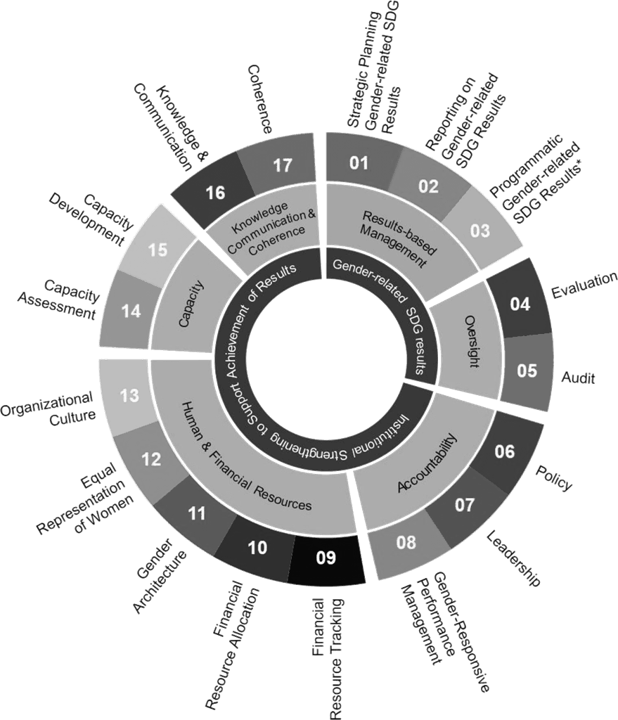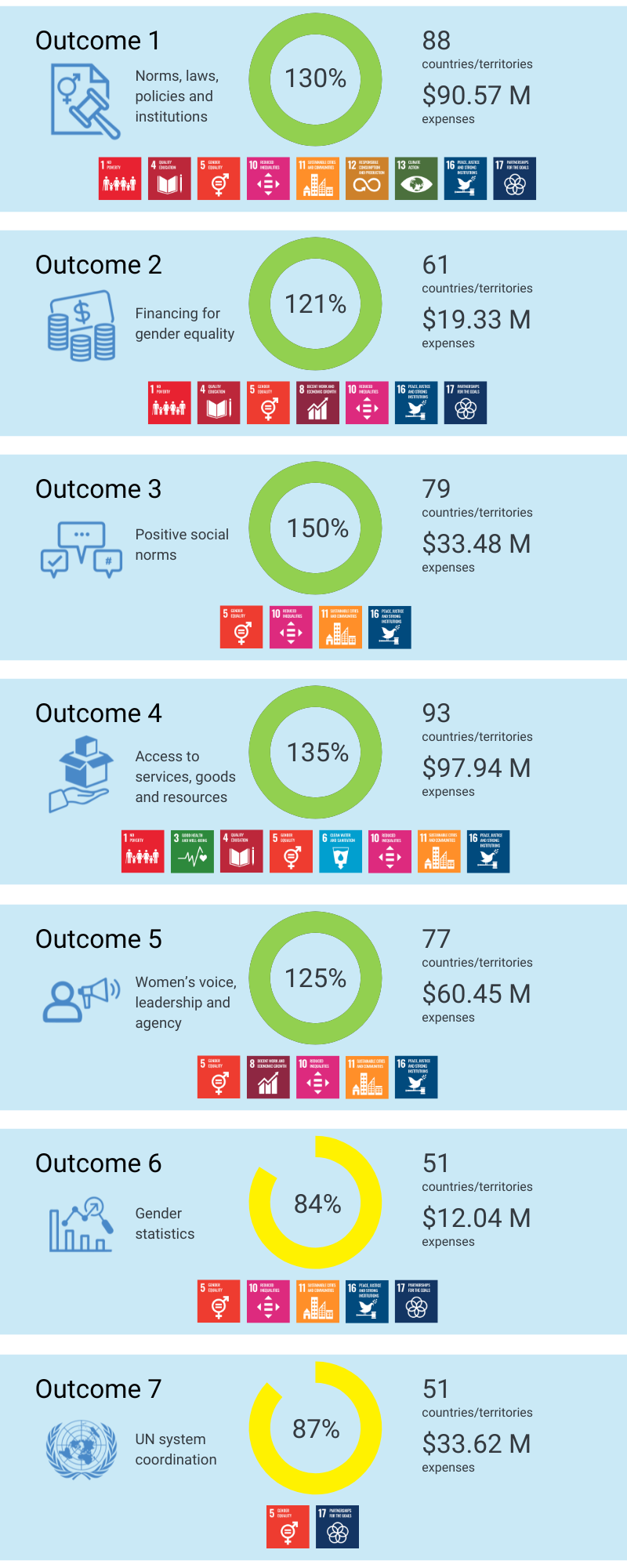2022-2025 Global Results Highlights 2024 - Key results
Key results across countries and regions in 2024
were adopted, revised or repealed to further advance and protect the rights of women and girls, in line with international norms and standards.
adopted on women, peace and security stand to benefit up to 137.2 million women and girls. The plans put women’s leadership at the centre, making them locally-owned, responsive and positioned to build long-term peace.
adopted 180 gender-responsive national and local multi-sectoral policies, strategies and plans, addressing issues such as equal pay, the economy of care, violence against women, environment and climate change, and women, peace and security, potentially benefitting 1.7 billion women and girls.
able to apply newly-obtained knowledge and technical skills to effectively mainstream gender equality into fiscal laws, policies and standards, in areas including taxation, trade, and decentralization.
have adopted strategies for the prevention of violence against women. These efforts are leading progress towards SDG(Sustainable Development Goal) indicators 5.2 and 5.2.2 to reduce the proportion of women and girls subjected to physical, sexual or psychological violence.
across 91 countries with strengthened capacities to deliver quality goods, services, and resources for women across the humanitarian-development-peace continuum.
- such as dialogues or coalitions - have been established in in 44 countries to enable the meaningful and safe engagement of civil society representatives in policy design and decision-making.
have been disbursed to civil society organizations, local women-led organizations and networks, working towards the achievement of gender equality, including in conflict and crisis settings.
in 20 countries developed and implemented to prevent, monitor and mitigate violence against women in politics and public life.
in 22 countries informed by data and statistics that adequately reflect differences and inequalities in the situation of women and men in all areas of life.
in the number of United Nations Country Teams who reported on the UNCT-SWAP(System-wide Action Plan) - strengthening accountability of the UN system to women and girls.
media impressions, 14 million website views, and 577,610 new social media followers gained by effectively leveraging partnerships and communications.
(137 per cent increase since 2021) have now committed to fostering business practices that empower women through the Women’s Empowerment Principles.





